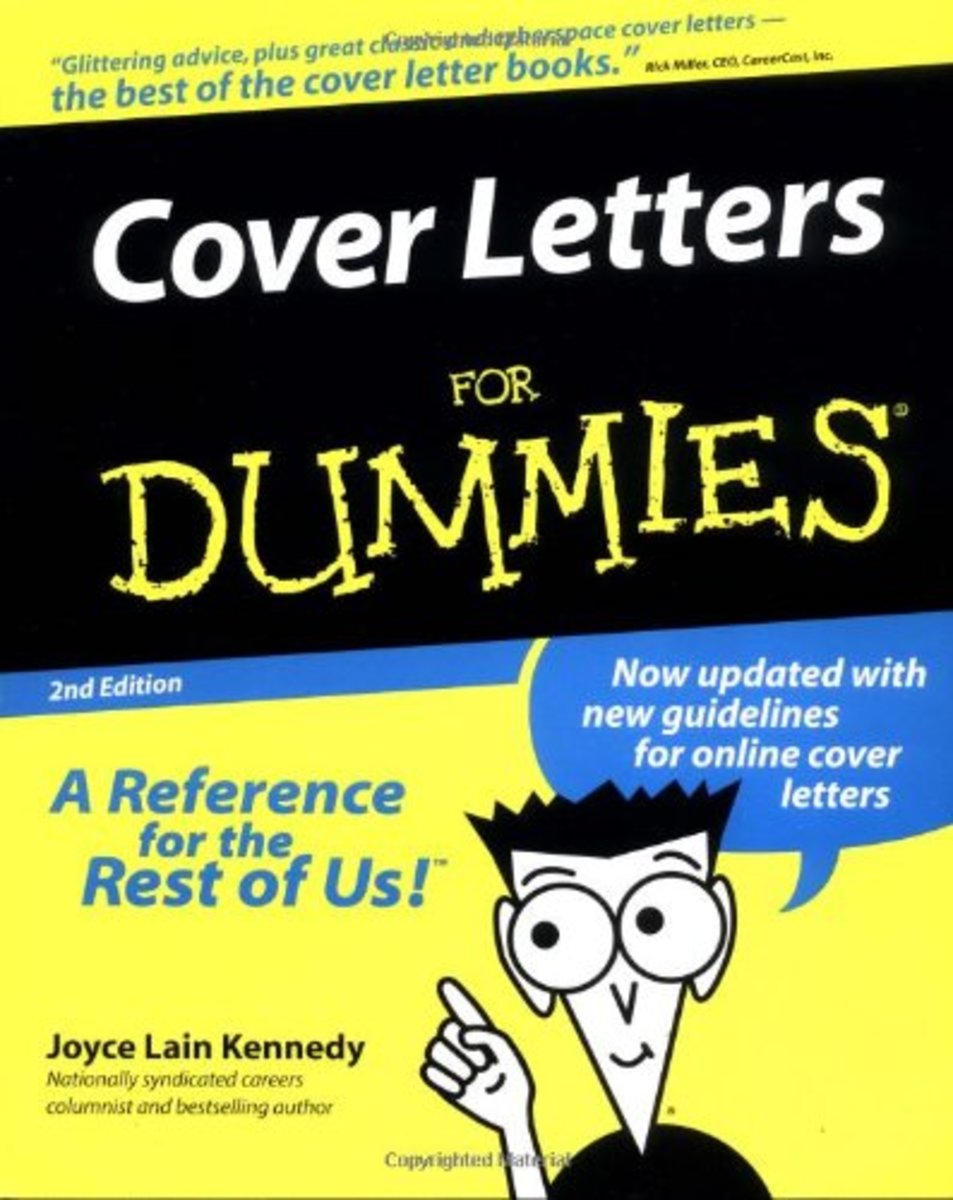How to Write a Business Letter that Works - Six Tips
If you're going to write it, write it well.

Writing a Business Letter - Some simple but important rules
A well written business letter can be the difference between achieving your objective and creating a problem. Well written communications are essential for a well run business. A business letter can launch a successful project, hire an outstanding employee, form a strategic partnership or land a new account. The worst thing about a poorly written business letter is that you will never find out that it was bad. The recipient of your letter will simply reject whatever it was that you were trying to accomplish. Seldom will you get a reply that says your letter was terrible (unless it was extremely terrible).
The Rules of Effective Business Letters
Whether it's sports or business, success means following some rules. These rules should be part of your business plan. Here are the basics of writing an effective business letter, along with some sample wording.
1. Make Nice
Throw a punch and don't be surprised if you receive one in return. Even if the purpose of your letter is to complain about something, you will thwart your own intention if you're overly aggressive and confrontational. A nasty tone or a threat will result in an emotional response from the recipient. Think about it. You open a letter and you're accused of something or hit with a blunt demand that you do something. Will you take it in casual stride? Doubtful. It's more likely that you will want to retaliate in some way. Because it's in writing, whether email or on paper, the nastiness will be shared with others and kept on file, ready to renew the emotional response every time the letter is viewed. Everything, EVERYTHING your company does contributes or detracts from its brand, and this is emphatically so with written communications.
Once you say it in writing, you can't easily take it back. There are wrong and right ways to complain about something. Let's take a look at some good and bad ways of saying something:
A supplier, who you rely on and would like to keep, has sent a bad shipment of product.
Bad - "The last batch of product that you sent was pure crap. Do this one more time and our contract will be at an end." You have successfully ruined someone's day and you have also made a possible enemy.
Good - "The shipment that you sent last week surprised me. It fell below the quality that we've learned to expect from your fine company. Please let me know that this won't happen again." Notice that you put a compliment in the letter and that you don't confront the supplier with an ultimatum.
You want to contact a potential partner about forging a strategic alliance.
Bad. "We are considering your company as a possible strategic alliance partner. Do not consider this an offer as we have to review your activities carefully from legal, financial and marketing perspectives." A bit snotty, no? You're talking down to a potential partner. I don't care if you're Microsoft talking to Billy Bob's Servers, Inc., don't play the village chief. Of course you're going to do your diligence before finalizing anything, but you don't have to be so blunt in a feeler letter.
Good. "We have long admired your excellent company and its position in the marketplace. We would welcome the opportunity to discuss a strategic partnership. We believe that our companies can bring a unique strength to our mutual futures." Now this is a guy you would like to talk to.
2. Use Proper Grammar
If you review a resume and spot grammatical mistakes, it's unlikely that you will want to interview the person. The same is true of any business letter you send. Poor grammar and usage pegs you and your company as unprofessional. Hemingway once said that there is no such thing as writing, only rewriting. Review every letter carefully before you send it. Have it proofread by a colleague or someone on your staff. A writer is his own worst editor.
3. Have your letter reviewed by a third person.
Just as you should have your letter proofread for spelling and grammar, you should enlist the help of a trusted third party to review it for content. Even if you are the boss, a second set of eyes can be invaluable. "Do you really want to say this" is a phrase you should cherish. A third party may see a hidden wrong message, hidden to you that is. If your letter may have legal implications, absolutely positively have it reviewed by an attorney. Lawyers make a lot of money trying to unscramble eggs. How do you know it may have legal implications? Here's the rule: if you think it may, it does - call your lawyer.
4. Have another person write the letter
If you can honestly admit to yourself that you're not a talented writer (and very few people can admit this), have a good writer in your organization write the letter. This isn't necessary for simple day-to-day communications, but if it's an important letter, farm out the task to a talented person in your company. If you don't have such talent in-house, consider using the regular services of a freelance writer.
5. Email or Paper
Email is the greatest communication breakthrough since the Pony Express, but that doesn't mean it should be your sole means of written communication. At the risk of oversimplification I make this statement: email is less formal than regular mail. If you want your business letter to stand out consider snail mail. We are so used to email that when we receive a regular letter it calls attention to itself just because it came in the mail. If you use email, by all means follow the rules for avoiding email etiquette.
6. Send letters to unsuccessful job applicants.
It isn't necessary to send a letter for every resume that you reject, but it's a must to send a letter to anyone who you have interviewed. Again, your company's brand is the issue. Besides a thing called common courtesy, sending a letter to an unsuccessful candidate is your way of showing that your company has a human face. Naturally you will have a form letter for this, but you should personalize the letter by including something specific to the applicant to let the person know that your message isn't simply a form letter.
Example: "I'm sorry to say that we will not be offering you a position with our company," (get right to the point). We had a number of excellent candidates for the position, yourself included. I was very impressed with your background in _______."(something specific here). "With your excellent credentials I am sure that your search will soon bear fruit. I am keeping your resume on file, and should another opening become available, chances are strong that I will be in touch with you. I thank you for considering a position with our company." The whole point here is to treat the applicant as a human being, one who will think positively about your organization. You may find that you want the applicant to fill a spot. It's easier to contact someone who has positive feelings about you.
A business letter has an objective, otherwise you wouldn't send it. Remember that every time you communicate with the outside world, your company's brand and reputation is on the line.
The author of this article is CEO of Moran Communications, Inc., The Write Stuff, a company that writes communications for business.
Copyright © 2013 by Russell F. Moran. Samples of letters used in this article may be freely used in writing business letters without seeking permission.









